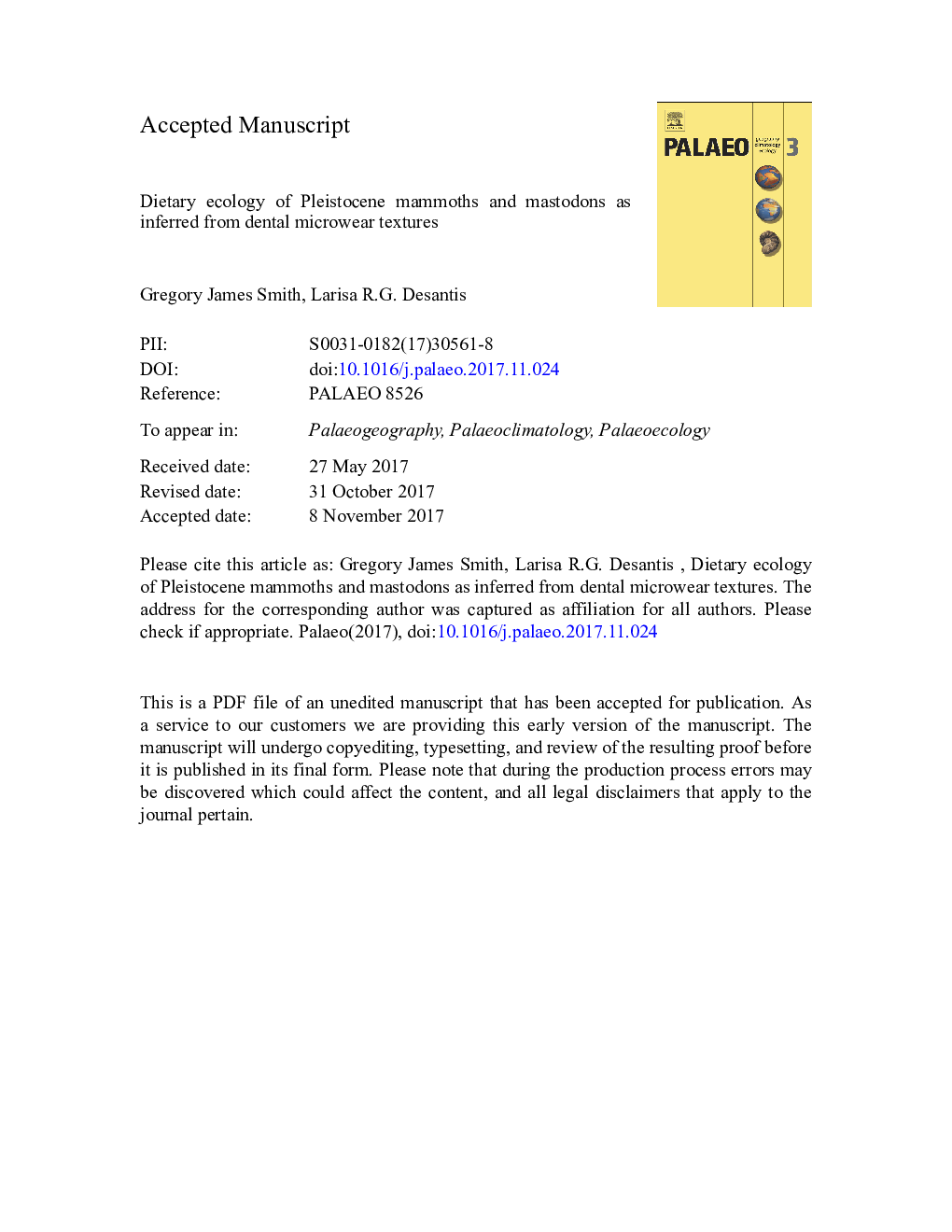| کد مقاله | کد نشریه | سال انتشار | مقاله انگلیسی | نسخه تمام متن |
|---|---|---|---|---|
| 8868389 | 1622100 | 2018 | 69 صفحه PDF | دانلود رایگان |
عنوان انگلیسی مقاله ISI
Dietary ecology of Pleistocene mammoths and mastodons as inferred from dental microwear textures
ترجمه فارسی عنوان
بوم شناسی رژیم غذایی ماموت های پیلستوکن و مشتوپون ها به صورت ذره ای از بافت های میکروویو دندان
دانلود مقاله + سفارش ترجمه
دانلود مقاله ISI انگلیسی
رایگان برای ایرانیان
کلمات کلیدی
موضوعات مرتبط
مهندسی و علوم پایه
علوم زمین و سیارات
فرآیندهای سطح زمین
چکیده انگلیسی
The Columbian mammoth (Mammuthus columbi) and the American mastodon (Mammut americanum) have traditionally been considered to have been ecologically distinct, with mammoths often characterized as cosmopolitan grazers or mixed feeders and mastodons as forest-dwelling browsers. However, these large-bodied proboscideans occupying temperate, often resource-limiting environments in Pleistocene North American would have necessitated a much wider range of resources. For the isolated pygmy mammoth (Mammuthus exilis) of California's Channel Islands, the resource-limited nature of its insular home may have exacerbated the need for consumption of a wide range of less-preferred resources. The goal of this study is to better understand the degree to which each of these taxa consumed tough and/or hard food items, including grass, leaves, and woody browse in their respective environments. To this end, we examined the dental microwear of Pleistocene mammoths and mastodons to address the following questions: 1) do mammoths and mastodons with known differences in diet (via carbon isotopes) have similar dental microwear attributes?, 2) do juvenile and adult mammoth and mastodons consume foods with similar textural properties?, and 3) did the Channel Islands mammoths consume food with similar textural properties as the mainland Columbian mammoths? Our results demonstrate that the mammoths and mastodons here examined ate foods with similar textural properties, despite consuming plants with disparate stable isotope values. These data suggest that mammoths and mastodons were generalists (in regards to dietary textures) and did not eat softer or tougher foods as juveniles. Further, the Channel Islands mammoths ate food items with more variable textural properties (including a greater incidence of hard foods) than Columbian mammoths from Texas. While more work is needed to assess the ubiquity of these results across time and space, collectively, these data suggest that extinct proboscideans are generalist feeders similar to extant elephants.
ناشر
Database: Elsevier - ScienceDirect (ساینس دایرکت)
Journal: Palaeogeography, Palaeoclimatology, Palaeoecology - Volume 492, 1 March 2018, Pages 10-25
Journal: Palaeogeography, Palaeoclimatology, Palaeoecology - Volume 492, 1 March 2018, Pages 10-25
نویسندگان
Gregory James Smith, Larisa R.G. DeSantis,
